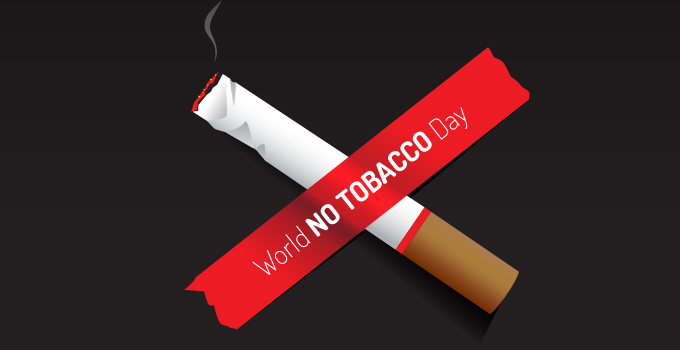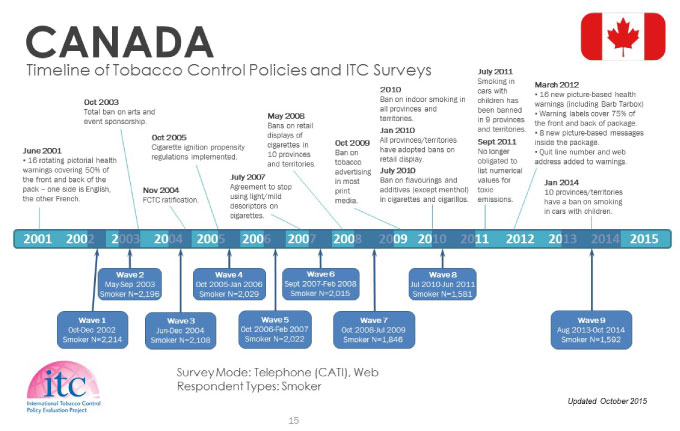
For many years, smoking was considered a sophisticated and glamorous pastime advertised to millions as a source of relaxation and freedom. But today, in the face of decades of research showing the harmful short and long-term side effects of smoking, including cancer and lung disease, that perception has almost entirely disappeared.

Dr. Geoffrey Fong
Yet many people continue to smoke. Almost 15 per cent of Canadians (more than four million people) were active smokers in 2013, with the majority of smokers reporting that they smoked daily. Tobacco use is the leading cause of cancer and cancer deaths in the world and it contributes to many other serious health conditions. According to the World Health Organization (WHO), tobacco kills approximately six million people per year globally. Preventing the use of tobacco and helping users quit are the important first steps in a long-term effort to ensure fewer people develop and die from lung cancer and other related diseases.
As part of OICR’s efforts in cancer prevention research, the Institute helps fund the research of Dr. Geoffrey Fong, a Professor at the University of Waterloo and leader of the International Tobacco Control Policy Evaluation Project (ITC Project). Fong and his team of more than 100 researchers study the implementation and effectiveness of the tobacco control policies put in place by the signatories of the Framework Convention on Tobacco Control (FCTC). The FCTC, the world’s first health treaty, calls for policies such as pictorial warning labels, advertising restrictions, smoke-free laws and bans on flavourings.
Preventing the use of tobacco and helping users quit are the important first steps in a long-term effort to ensure fewer people develop and die from lung cancer
Using longitudinal cohort surveys in 22 countries, which observe the same individuals over a period of time, Fong and his group track both tobacco users and non-users to determine if levels of tobacco use have been affected by FCTC polices. The findings of the ITC Project are used to inform new and improved ways to control tobacco use. One of the countries that Fong studies is Canada. Fong’s group created the timeline below to show the evolution of tobacco control policy in Canada, as well as the timing of the ITC Project surveys. Of note is that the representative sample of tobacco users decreases over time, indicating that tobacco control policies have had success.

The work of the ITC Project is helping to control tobacco use not only in Canada but also in the developing world, which is expected to account for 80 per cent of the projected eight million tobacco-related deaths in 2030.
“We hope that through our work we can help guide policy makers and health officials so that the global burden of tobacco use can be reduced,” says Fong. “Our studies have shown that regulations like plain cigarette packaging and assistance for those who want to quit can have a real impact, but there is still a lot of room for improvement.”
If you’re looking to quit smoking, call 1-877-513-5333 in Ontario for free help by phone.
Source: http://tobaccoreport.ca/2015/TobaccoUseinCanada_2015.pdf
